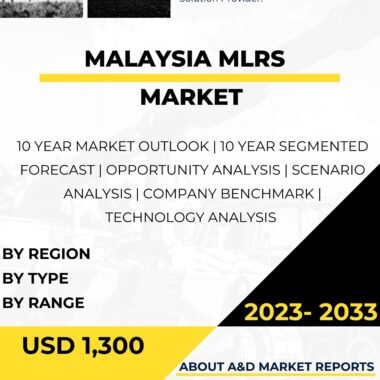Description
The UK MLRS market is a critical and dynamic sector that plays a pivotal role in enhancing the country’s artillery capabilities and providing versatile and powerful firepower on the battlefield. The Multiple Launch Rocket System is an advanced weapon system designed to deliver a barrage of rockets over a wide area, allowing the UK’s armed forces to engage and neutralize enemy targets effectively. These sophisticated systems offer essential advantages in modern warfare, providing rapid and precise artillery support for ground operations.
One of the primary areas of focus in the UK MLRS market is the development and procurement of advanced MLRS platforms. The UK government and defense industry invest significant resources in designing and manufacturing MLRS systems that can meet the diverse operational requirements of the country’s armed forces, including the Army and Royal Marines.
Moreover, the UK MLRS market addresses the use of these systems in various military operations and scenarios. MLRS platforms are deployed to provide intense and concentrated firepower against enemy positions, armor, and artillery units, supporting ground troops and contributing to the overall success of military campaigns.
Furthermore, the defense MLRS market in the UK encompasses the integration of advanced technologies into MLRS platforms. Modern MLRS systems incorporate cutting-edge fire control systems, navigation equipment, and targeting capabilities, ensuring the UK’s artillery units have the tools and capabilities to conduct precise and effective strikes against enemy targets.
The integration of MLRS platforms into the UK’s defense market has also been driven by the need for operational flexibility and mobility. MLRS systems provide rapid deployment and the ability to quickly relocate, allowing them to respond rapidly to changing battlefield conditions and support maneuver operations effectively.
Additionally, the defense MLRS market in the UK addresses the use of these systems in joint military operations. MLRS platforms are often employed in coordination with other military assets, such as ground forces, attack helicopters, and intelligence, surveillance, and reconnaissance (ISR) assets, enhancing the overall effectiveness of joint military operations.
The UK defense market is characterized by continuous innovation and advancements in MLRS technology. Researchers and developers are continually exploring new applications for MLRS systems, as well as improving their performance, range, accuracy, and adaptability to various operational environments.
Moreover, the defense MLRS market in the UK is influenced by the importance of training and expertise. Operating MLRS systems effectively during combat operations necessitates well-trained personnel with a thorough understanding of artillery tactics, fire support coordination, and target engagement procedures.
The deployment of MLRS platforms requires careful consideration of strategic and operational factors. The UK must assess the potential roles and missions for MLRS systems in the context of its overall defense strategy and force structure.
The UK defense market faces several challenges. One significant concern is the need for continuous investment in research and development to stay at the forefront of technological advancements. As adversaries develop new countermeasures and tactics, the UK must remain innovative to ensure its MLRS systems remain effective and adaptable.
Additionally, the defense MLRS market must address the challenge of cost and affordability. Developing and maintaining advanced MLRS systems can be expensive, and the UK must balance the need for cutting-edge technologies with cost-effectiveness to ensure the availability of capable MLRS platforms.
Moreover, the deployment of MLRS systems requires strategic partnerships and international cooperation. The UK often collaborates with allied nations and defense partners to enhance MLRS technology, share research and development costs, and conduct joint military exercises and operations.
In conclusion, the United Kingdom’s defense MLRS market is a critical and dynamic sector that offers a wide range of capabilities to enhance the country’s artillery capabilities and provide versatile and powerful firepower on the battlefield. MLRS systems, as advanced weapon systems, provide significant advantages in delivering concentrated and rapid artillery support for ground operations. Continuous research, development, and innovation are vital to address challenges and harness the full potential of MLRS systems to support and strengthen the UK’s defense capabilities in the future.




